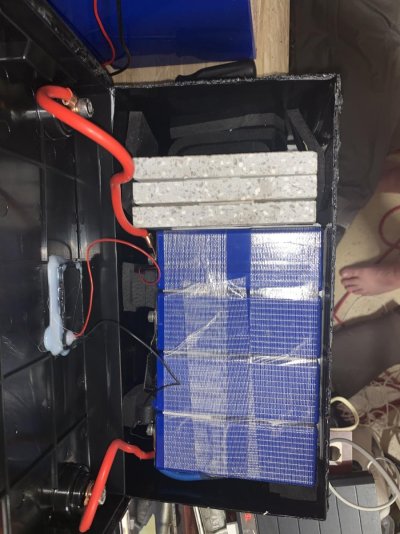Barking Sands
Guru
- Joined
- Dec 24, 2019
- Messages
- 887
- Location
- United States
- Vessel Name
- M/V Intrigue
- Vessel Make
- 1985 Tung Hwa Senator
I follow the prices closely. I have also noted that you no longer have to purchase from Ali Baba or Ali Express. You can get them from Amazon which is another layer of protection and return access. Many quality Lithium batteries are now less than $400 for a 100Ah 12 volt battery with a 100 amp BMS. The 100 Amp BMS typically will support charge rates well above what boaters would charge at and discharge rates up to 200 amps momentarily and 100 amps continuous.
The drop in prices over the last 6 months has been drastic. And with the amount of additional competition in this market I expect them to continue to fall.
Here is a link to a quality battery for less than $400. After clicking the link...also check out that price of the 200 AH version.
https://www.amazon.com/LiFePO4-Batt...id=1631385078&sprefix=100+ah+,aps,231&sr=8-15
I just wanted to point this out to those of us planning battery and electrical upgrades soon. I have a set of Dakota Lithium batteries for my golf cart (set of 3) that I paid $799 each for with a small charger almost 2 years ago. Those batteries have been nothing short of amazing. But the battery I linked is basically the exact same battery for half that price 20 months later.
Looks like a good time to make a move if you were waiting for prices to fall.
Just be aware most of these batteries do not have cold protection and that will have to be built into your system for charging at less than 32 degrees.
The drop in prices over the last 6 months has been drastic. And with the amount of additional competition in this market I expect them to continue to fall.
Here is a link to a quality battery for less than $400. After clicking the link...also check out that price of the 200 AH version.
https://www.amazon.com/LiFePO4-Batt...id=1631385078&sprefix=100+ah+,aps,231&sr=8-15
I just wanted to point this out to those of us planning battery and electrical upgrades soon. I have a set of Dakota Lithium batteries for my golf cart (set of 3) that I paid $799 each for with a small charger almost 2 years ago. Those batteries have been nothing short of amazing. But the battery I linked is basically the exact same battery for half that price 20 months later.
Looks like a good time to make a move if you were waiting for prices to fall.
Just be aware most of these batteries do not have cold protection and that will have to be built into your system for charging at less than 32 degrees.


